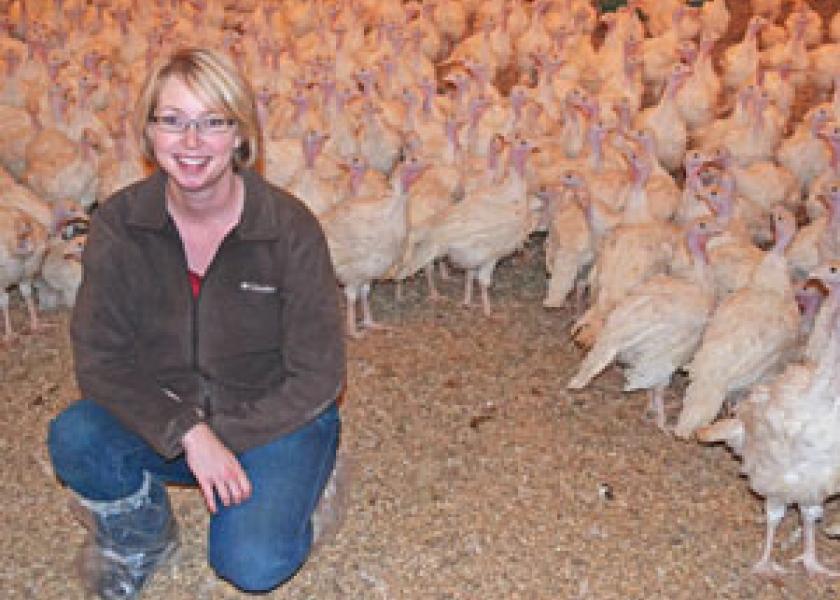Profitability Dries Up

Drought cuts deep for livestock farmers
As the hot and dry weather scorched corn and soybean crops this summer, many livestock producers’ hopes of a profitable year dried up with the crop.
"Feed is one of our biggest input costs," says Katie Olthoff, who raises turkeys with her husband, Bart, in Stanhope, Iowa. "When corn prices rise like they have this year, that definitely puts a strain on our farm."
In addition, the raging temperatures threatened Olthoff’s flocks. "Overnight, we lost 5% of one flock, which is a pretty huge loss for us in one night," she says.
Despite the dynamic forces arrayed against them, their operation was able to cushion some of the potential losses. Using solid management practices and being proactive rather than reactive, the Olthoffs stayed in the black.
"We’ve tried really hard to minimize our inputs," Olthoff says. "We try to be very efficient and use best management practices to make sure we have big healthy birds going to market."
Being mindful of energy efficiency has boosted the Olthoffs’ bottom line. They use tunnel-ventilated barns instead of curtain side walls, and propel airflow through big fans.
Numbers don’t lie. The picture isn’t as hopeful for all livestock producers. Many pork producers are taking a big hit this year. While the sector usually has its lowest prices in the fourth quarter, this year experts project the largest fourth-quarter losses on record.
Iowa pork producer Todd Wiley is continually crunching the numbers to maintain a realistic view of the situation. He anticipates his losses this fall will total $57 per head.
"Using $7.44 corn, $430 soybean meal and $265 per ton dried distillers’ grains, our losses today are at $26 per pig. While it’s better than expected, it’s clearly not sustainable," Wiley says.
Iowa State University Extension livestock economist Shane Ellis says months of losing money are forcing some producers to pull back. This means flooding the market with hogs that it doesn’t make financial sense to feed.
"When we have a threshold where we’re sending more than 2.3 million hogs to the market on a weekly basis, it drives down hog prices," Ellis says.
Producers such as Wiley don’t expect the financial situation to improve soon.
"I’m anticipating to go through this until we get to June, when prices are better, hopefully," Wiley says.
Cattle crunch. Ellis says cattle producers are in a little better shape, but still struggling. Ranchers are liquidating herds in order to better manage what they have.
"The cow–calf operation is the engine behind the beef industry, and if you’re not producing calves, you’re not going to have the engine of your industry revved up and going," Ellis says. "We’ve been on the decline for several years; last year’s drought in the Southern Plains and now the nationwide drought this year are definitely not improving the situation."
He says that even if producers get adequate moisture for the next few years, he doesn’t anticipate an increased calf crop until 2015.
In addition to herd liquidation, the drought will force more consolidation. As history has shown, during the cycles in agriculture some survive and some are forced to sell out.
Wiley thinks the past has prepared many pork producers for turbulent times, and most will survive. "Pork producers are resilient," he says optimistically. "So I’m hopeful that the damage, while it will be hard while it lasts, will be relatively short-term."







